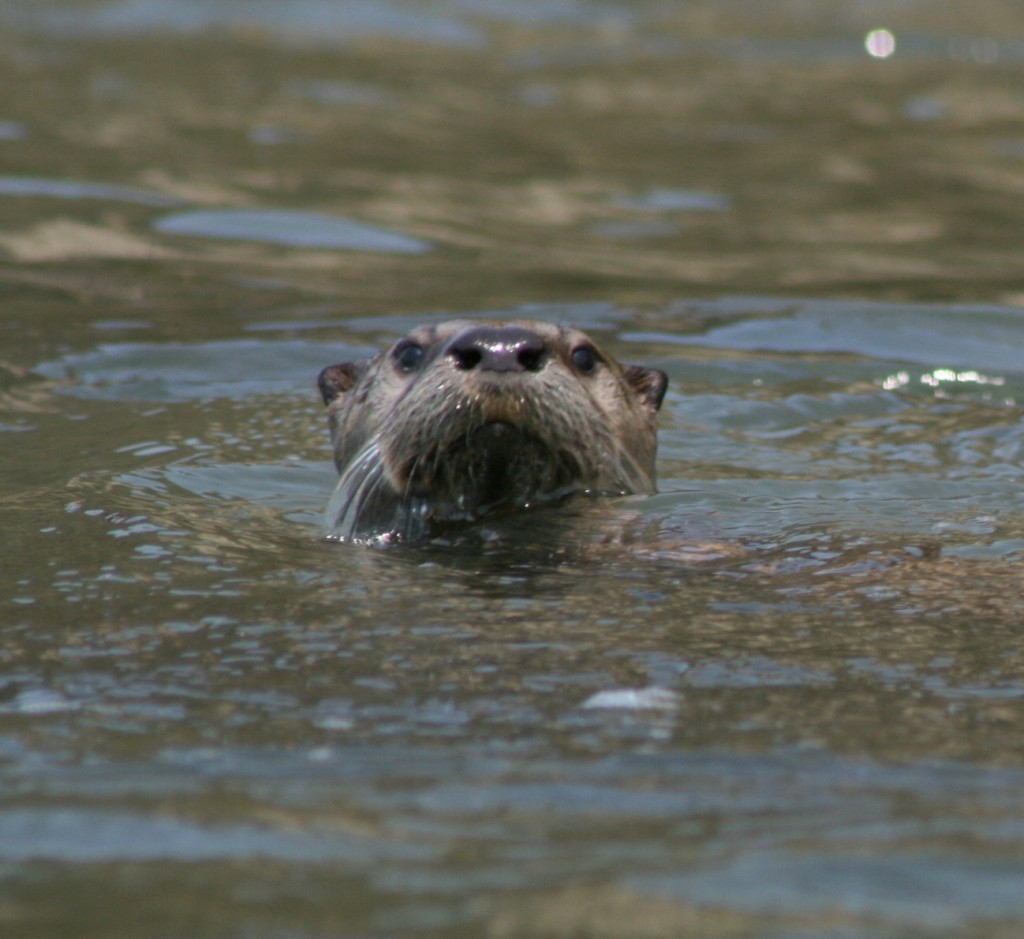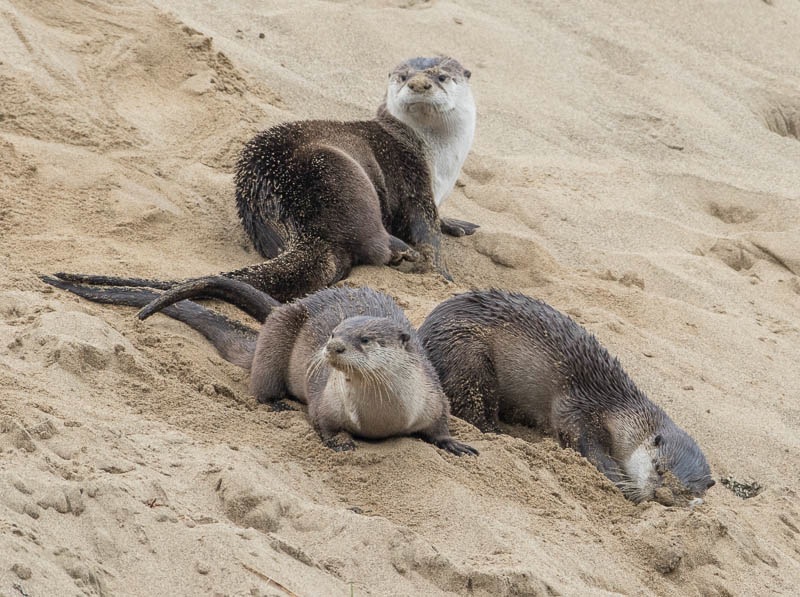
Cavorting along stream banks, sliding on their bellies, munching crayfish with relish, river otters seem to approach the necessities of life with playful abandon. After decades of absence in the San Francisco Bay Area’s coastal habitats, river otters appear to be back, according to a census published in Northwestern Naturalist, the journal of the Society for Northwestern Vertebrate Biology.
The two-year study covering 2012-13 found otters reported in eight of the nine Bay Area counties, including what co-authors Paola Bouley and Megan Isadore say are the first river otter sightings in decades in Alameda, San Francisco, and Santa Clara counties.
Bouley and Isadore are co-founders of the River Otter Ecology Project, or ROEP. Project staff monitored a focal study area in Marin County with over 200 km. of coastline and bay habitats, collected documentation from wildlife cameras and used information from citizen scientists who recorded over 1,000 sightings on the ROEP website.
“River otters are often perceived as animals that require pristine wilderness to survive,” ROEP executive director Isadore said in a statement. “But our research shows that they are adapting well to urban and semi-urban living in and around San Francisco Bay and the Marin and Sonoma coast.”
The study says otters will likely continue to expand their range southward, unless there are barriers to them doing so. While river otters tend to hunt for food in freshwater habitats like lakes, streams and reservoirs, researchers saw them foraging in the marine environment and returning from the ocean along beaches to their freshwater areas.

Not to be confused with their ocean-loving cousins, the sea otters, river otters are smaller, and have dens for raising their pups and feet adapted to digging and scampering over land. The Aquarium of the Bay website has a good comparison of the two species. If you see an otter in the Bay Area it’s highly likely to be a river otter, even if you see it in the bay. There have been a few scattered sightings of sea otters, even one that hung around in the bay for a while, but they are rare.